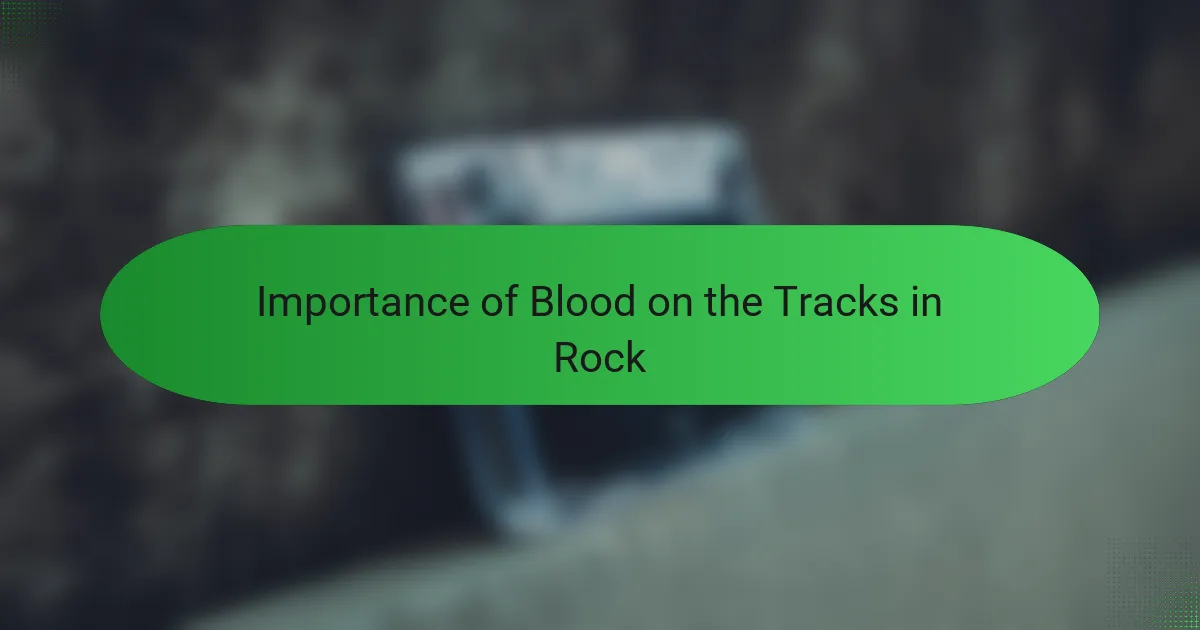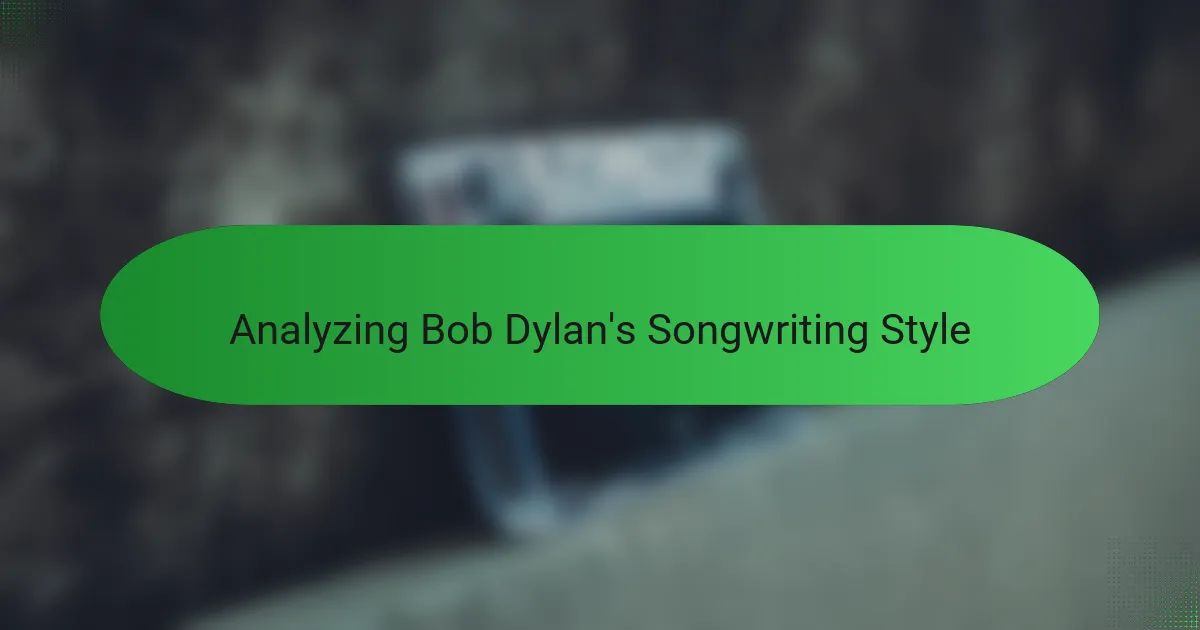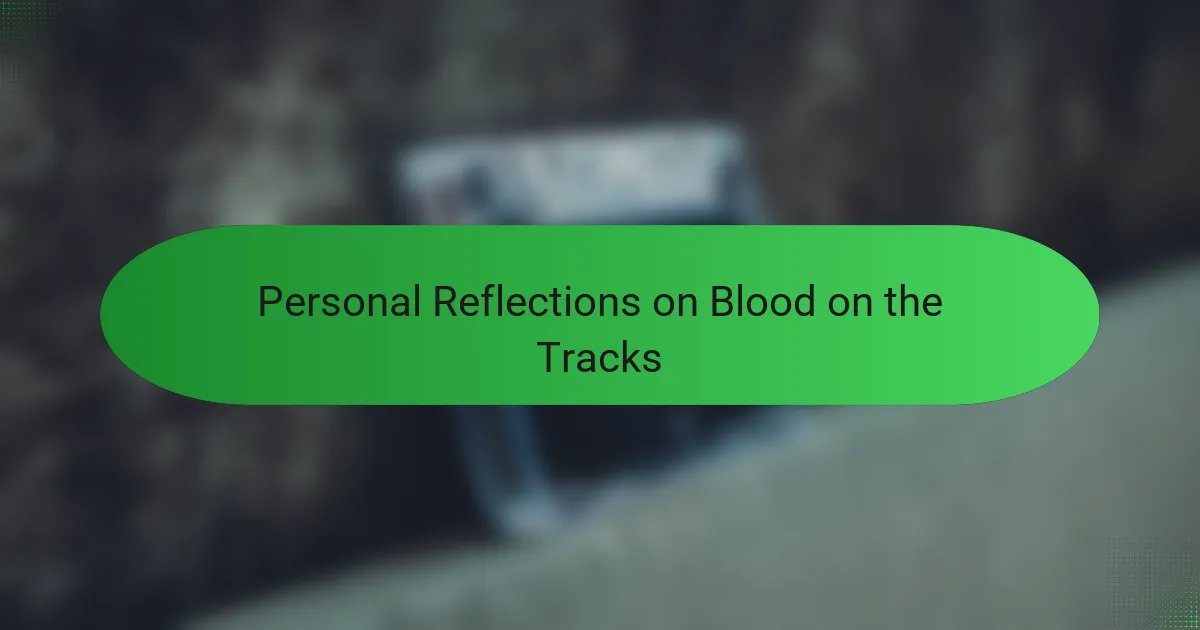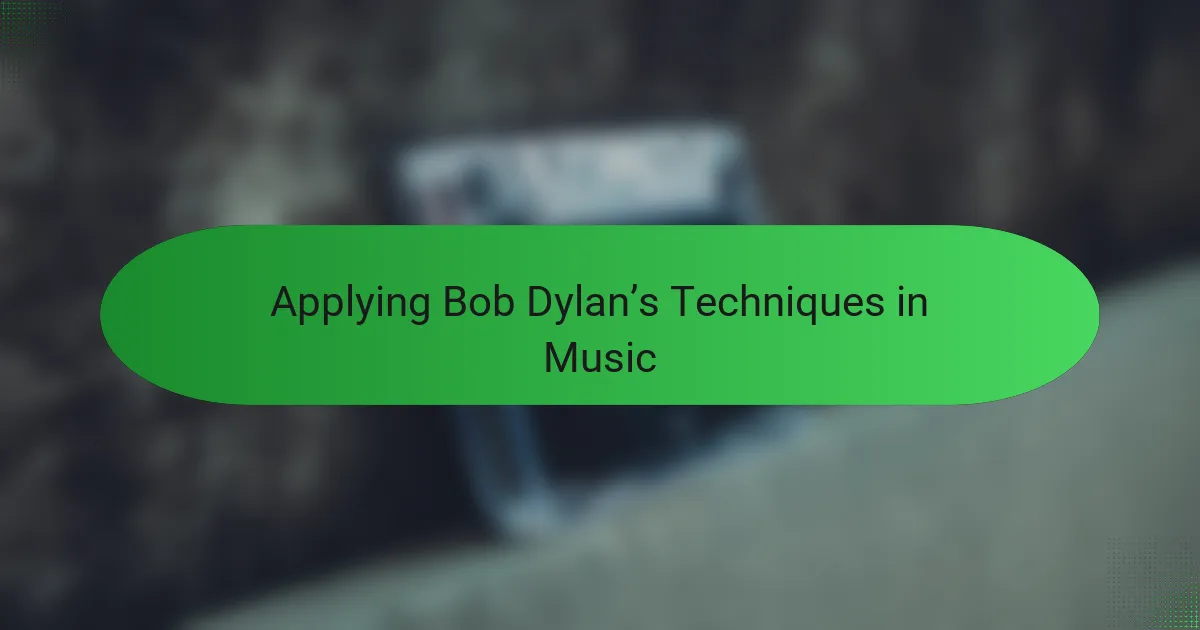Key takeaways
- “Blood on the Tracks” is praised for its emotional honesty, capturing the complexities of love and loss through intimate storytelling.
- The album bridges folk and rock, influencing future artists to embrace vulnerability in their music while maintaining timeless themes.
- Dylan’s songwriting combines simple language with deep emotional layers, creating a personal and relatable listening experience.
- The album expresses both sorrow and resilience, highlighting the universal human experience of navigating pain towards hope.

Understanding Blood on the Tracks Overview
Blood on the Tracks feels like stepping into a diary, raw and unfiltered. Listening to it, I often wonder how Dylan poured so much feeling into each lyric—was he revisiting past heartbreaks or simply channeling universal pain? This sense of vulnerability is what makes the album resonate deeply with me.
What strikes me most about the album is the intimate storytelling. Dylan’s words don’t just tell a story; they invite you to feel every twist and turn of a relationship’s rise and fall. Have you ever had a song that mirrors your own heartache so precisely that it almost feels like a conversation with yourself? That’s what Blood on the Tracks does for me.
The album’s blend of folk and rock, wrapped in Dylan’s distinctive voice, creates an emotional landscape that feels both timeless and personal. Each track feels like a chapter, and as I move through the album, I’m reminded of my own experiences with love and loss. It’s this connection that makes understanding Blood on the Tracks more than just listening—it’s about feeling.

Importance of Blood on the Tracks in Rock
Blood on the Tracks holds a special place in rock history because it broke new ground in emotional honesty. I remember the first time I realized how deep the album’s impact runs—it wasn’t just about catchy tunes but about exposing raw human feelings in a way rock hadn’t quite embraced before. Have you ever felt that sudden clarity when a song gets you so perfectly? That’s the kind of importance this album has.
What’s fascinating to me is how Blood on the Tracks bridges folk’s storytelling with rock’s intensity, reshaping what a rock album could be. This fusion wasn’t just innovative; it influenced countless artists who followed, pushing them to dig deeper and be more vulnerable in their music. In my experience, albums like this aren’t just heard—they’re felt, and that emotional depth elevates rock to something more profound.
The album’s importance also lies in its timelessness. Even decades later, its themes of love, loss, and introspection continue to resonate, proving that great rock isn’t just about sound but about connecting with the human experience. When I revisit Blood on the Tracks, I’m reminded that music’s true power is in how it mirrors our own stories, making the personal universal. Doesn’t that make you appreciate it even more?

Key Themes in Blood on the Tracks
What really grabs me about the themes in Blood on the Tracks is how heartbreak and reflection are woven so tightly together. Dylan doesn’t just sing about pain; he dissects the small moments that make relationships unravel, capturing that bittersweet tension between love and loss. Have you ever caught yourself replaying a memory, wondering if things could have gone differently? That’s exactly the kind of emotional detail Dylan lays bare here.
Another theme I find striking is the search for meaning amid chaos. The lyrics often feel like a conversation with oneself, grappling with confusion and regret. It’s as if Dylan is not just telling us a story but inviting us to sit with our own doubts and fears, making the experience deeply personal. I’ve found myself returning to these songs when life felt uncertain, almost like they offer a kind of gentle company.
Lastly, there’s this thread of resilience running through the album. Even in the darkest moments, there’s a flicker of hope or a hint of acceptance that something better might lie ahead. That balance between raw emotion and quiet strength is what keeps me coming back. Doesn’t it make you think about how we all carry a mix of pain and hope in our own stories? For me, Blood on the Tracks feels like a musical reflection of that very human journey.

Analyzing Bob Dylan’s Songwriting Style
Dylan’s songwriting style on Blood on the Tracks feels like a masterclass in blending simplicity with profound emotional weight. I’m always struck by how his lyrics come across as both poetic and conversational—like he’s speaking directly to you over a cup of coffee, yet every word carries layers of meaning you uncover with each listen. Have you noticed how he uses everyday language but twists it into something almost mythic?
What fascinates me most is Dylan’s knack for storytelling that refuses to stick to one clear narrative. His songs move like memories do—fragmented, sometimes contradictory, yet emotionally honest. It’s as if he understands that real life isn’t tidy, and he invites us to dwell in that messy, beautiful space with him. I find myself drawn to the way he leaves room for interpretation, making each song a personal journey rather than a fixed tale.
Then there’s the musical phrasing—Dylan’s voice doesn’t soar like a typical rock star’s; it murmurs, sneers, and bends with raw feeling. That imperfect vocal delivery adds a layer of authenticity I don’t hear in polished, overproduced tracks. For me, it’s like hearing the cracked edges of a heart break open, which makes the songwriting feel incredibly real and immediate. Don’t you think that kind of vulnerability is what sets Dylan apart?

Personal Reflections on Blood on the Tracks
Listening to Blood on the Tracks feels like revisiting an old, weathered journal where every word is soaked in raw emotion. Sometimes, I catch myself pausing mid-song, struck by how intimately Dylan captures moments I’ve lived through but never truly expressed. Have you ever had that unsettling feeling where a song mirrors your own heartache so precisely that it feels almost like a secret shared between old friends? That’s the kind of connection this album offers me—deeply personal yet universal.
There’s a certain vulnerability in Dylan’s voice on this album that haunts me long after the music fades. I remember times when I’d play these tracks during late-night drives, the imperfect phrasing feeling like a trusted companion confessing worries I kept inside. Doesn’t it make you wonder how music can sometimes say what words alone never could? That imperfect honesty is what keeps me coming back to Blood on the Tracks time and again.
What strikes me most is how the album doesn’t just dwell in sorrow; there’s a quiet resilience threaded through the pain. I think about my own moments of struggle and how, like Dylan’s songs, they don’t just end in heartbreak but hint at the possibility of healing. Isn’t that the beauty of this record—that it holds space for the messy, painful parts of life while still whispering about hope? That balance makes it feel profoundly human to me.

Applying Bob Dylan’s Techniques in Music
Applying Bob Dylan’s techniques in my own music has been eye-opening, especially his ability to combine straightforward language with deep emotional layers. I’ve tried writing lyrics that feel conversational yet poetic, like I’m letting someone in on a personal secret rather than delivering a polished speech. Have you ever noticed how just a simple phrase can carry so much weight if it’s placed just right? That’s the kind of subtle power Dylan wields that I strive to capture.
I also find Dylan’s approach to storytelling—fragmented, nonlinear, and open to interpretation—inspiring and a bit challenging. When I experiment with my songs, I don’t feel the need to lay everything out clearly. Instead, I let the emotions lead, allowing space for listeners to find their own meaning. It’s a different way to think about songwriting, moving away from neat narratives and toward something more honest and human.
What really stuck with me is Dylan’s vocal style on Blood on the Tracks—imperfect and raw, yet packed with authenticity. I remember recording a demo recently and purposely embracing my rough edges instead of chasing a flawless take. It felt more genuine, almost like sharing a vulnerable part of myself. Don’t you think that kind of honesty makes music resonate on a whole new level? It’s a lesson I keep coming back to, thanks to Dylan.